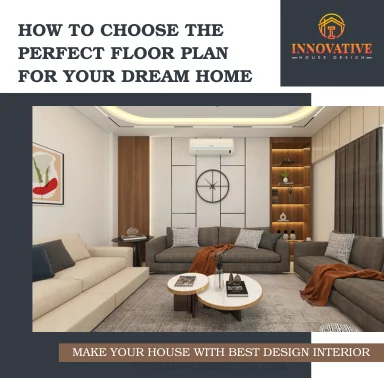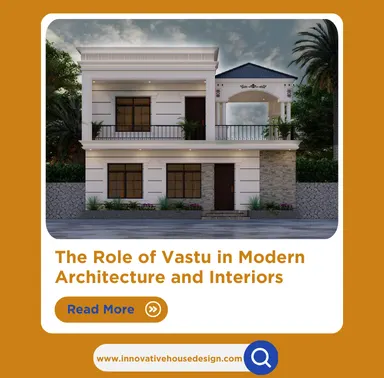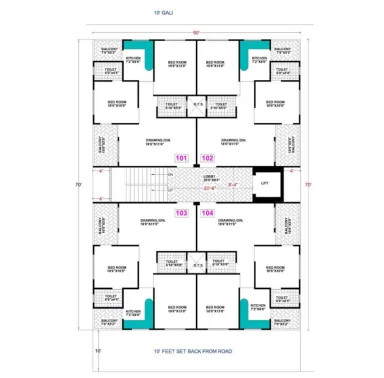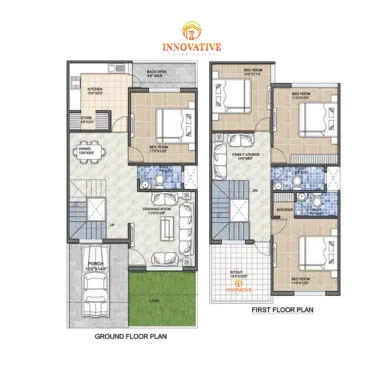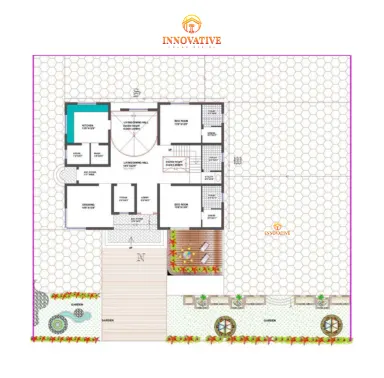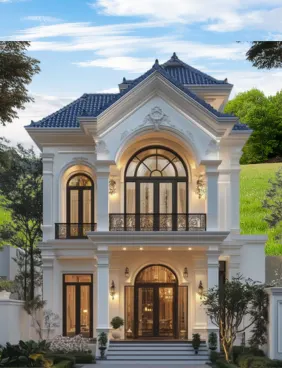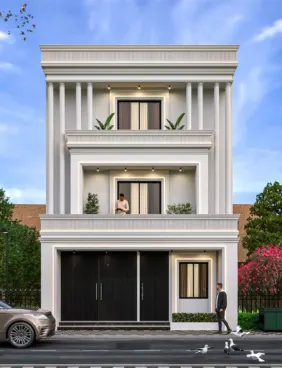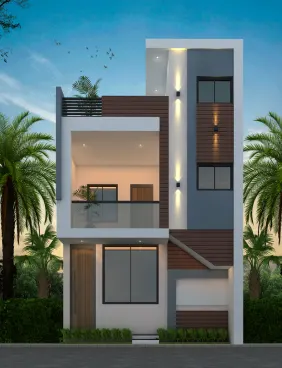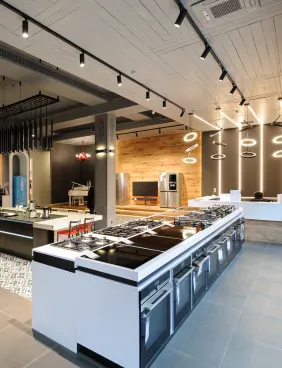 25 Agust 2025
25 Agust 2025  Admin
Admin
The Role of Vastu in Modern Architecture and Interiors
When it comes to building a home in India, most families still consider Vastu Shastra as an important part of the design process. Even though modern architecture is all about sleek looks, smart layouts, and functionality, Vastu brings in the balance of energy, harmony, and positivity. Many homeowners today prefer a mix of modern designs with traditional Vastu principles so that the house looks stylish while also feeling peaceful.
In this blog, let’s explore why Vastu is important in today’s homes, how it connects with architecture and interiors, and how it can be included without compromising on modern design.
What is Vastu Shastra?
Vastu Shastra is an ancient Indian science of architecture. It talks about how to design and position different parts of a house so that they align with the natural elements — earth, water, fire, air, and space. According to Vastu, when a home is built in harmony with these elements, it brings good health, prosperity, and happiness to the people living in it.
Why is Vastu Still Relevant Today?
Some people feel that Vastu is old-fashioned, but in reality, it blends very well with modern living. Here’s why it is still important:
- Better Energy Flow - A vastu-compliant design ensures that natural sunlight, air, and energy enter the house in the right way.
- Peace of Mind Many families believe a Vastu-friendly home removes negativity and stress.
- Resale ValueIn India, buyers often prefer houses designed as per Vastu, which increases property value.
- Balance of Modern + Traditional Even with stylish modern homes, small vastu adjustments can keep traditions alive.
Vastu Tips in Modern Architecture
Let’s see how Vastu fits into modern architecture without affecting style:
- Main Entrance According to Vastu, the main door should ideally face the north, east, or northeast. Architects today design elegant entrances in these directions to maintain balance.
- Living Room Should be in the east or north side of the house to bring positivity. Modern open-concept living rooms can still follow this placement.
- Kitchen Fire element is strongest in the southeast, so that’s the ideal location for kitchens. Even in modular kitchens, this direction is followed.
- Bedrooms The master bedroom is best in the southwest, which is linked with stability and strength. Guest or children’s bedrooms can be in the west or northwest.
- Staircase Staircases are usually placed in the south or west direction for good energy flow.
Vastu in Interior Design
It’s not only about where rooms are placed; interiors can also be designed as per Vastu:
- Colors Light and natural colors like white, cream, yellow, and green bring peace. Dark colors are best used carefully
- Furniture Placement Beds should not face mirrors, and work desks should face east or north for productivity
- Lighting Natural light is considered most powerful in Vastu. Architects often design large windows or skylights in the east and north sides.
- Decor Items Placing indoor plants, water features, and positive artwork enhances Vastu energy.
Can Vastu and Modern Design Work Together?
Yes, absolutely! Some people feel that following Vastu means compromising on modern looks, but that’s not true. Architects today design homes that are:
- Stylish yet practical Open floor concepts, large windows, and sleek layouts are still possible with vastu alignment.
- Energy efficient Vastu principles naturally align with eco-friendly architecture like better light and ventilation.
- Personalized Even if a family has specific needs, vastu-friendly adjustments can be made without disturbing the design.
Why Consult Experts for Vastu-Friendly Homes?
Designing a home that is modern, stylish, and vastu-compliant needs the right expertise. If the design is not planned properly in the beginning, it becomes difficult and costly to make changes later. That’s why consulting professional architects and interior designers is the best way. Experts know how to blend vastu rules with modern layouts so that the house looks contemporary without losing balance.
Final Thoughts
Vastu is not just about superstition – it’s about creating homes that feel balanced, positive, and welcoming. In today’s world, where people look for comfort, beauty, and peace in their homes, vastu continues to play a vital role.
A modern house designed with vastu principles brings the best of both worlds: style + harmony. Whether you are planning a new house or redesigning an old one, including vastu in architecture and interiors can make your living space truly special.
At Innovative House Design, we understand how important it is to create homes that are both modern and vastu-friendly. Our team of experts blends smart layouts, stylish interiors, and traditional principles to design houses that reflect your lifestyle while keeping harmony in mind. With us, your dream home will not only look beautiful but also feel positive and balanced.
Don’t Forget Storage Spaces
One mistake people often make is ignoring storage needs. Later, they end up with cluttered rooms. A good floor plan always includes proper storage: wardrobes, cabinets, lofts, or even a storeroom.
Think about where you will keep your seasonal clothes, appliances, or household items. Smart storage makes life easier and keeps the home neat.
Check the Flow of Movement
Imagine walking through the house. Is it easy to move from one room to another? Or do you have to cross bedrooms to reach the kitchen?
A perfect floor plan has a smooth flow — bedrooms in private corners, living areas in the center, and easy access to bathrooms. This makes the home practical and comfortable for daily use.
Consider Natural Light and Ventilation
A house full of natural light feels lively and saves energy. While choosing a floor plan, make sure there are enough windows, balconies, and open areas for sunlight and fresh air.
Cross-ventilation is very important, especially in Indian climates. Large windows facing east or north bring in maximum daylight without heating up the home.
Think of the Future
A home is not built for just today, but for many years. Ask yourself:
- Will your family grow in the future?
- Do you need a guest room for relatives?
- Do you plan to work from home and need a home office?
Choosing a flexible floor plan that can adjust to your future lifestyle is a smart move.
Follow Vastu Guidelines (If You Believe In It)
Many Indian families prefer Vastu-compliant homes for positivity and balance. Simple things like placing the kitchen in the southeast or the main door facing east can be adjusted during floor planning. Even if you are not a firm believer, aligning with Vastu may improve your home’s resale value.
Check Your Budget
While it’s tempting to go for a big, stylish house, always keep your budget in mind. Every extra room, staircase, or bathroom adds to construction costs. Discuss with your architect and find a balance between your dream design and your budget.
Consult an Expert
Finally, always get professional advice like Innovative House Design. An experienced architect or interior designer can guide you with creative ideas, energy-saving tips, and smart use of space. They can also make 3D plans to help you visualize the house before construction begins.
Conclusion
Choosing the right floor plan is like laying the foundation of your dream home. A thoughtful design makes life comfortable, adds beauty to your home, and ensures that the house grows with your family.
Think about your lifestyle, budget, and future needs before finalizing. Remember — walls can be painted later, furniture can be replaced, but the floor plan stays forever.
So take your time, plan carefully, and create a home that not only looks beautiful but also feels like the perfect fit for your family.


